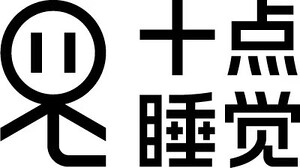LAZARUS
July 3–September 18, 2022
No.31a Wanhongli, South Gate
798 Art Zone
Chaoyang District, Beijing
The Click Ten Art Space is pleased to announce Zhou Yan: Lazurus, a solo exhibition curated by independent curator Yang Zi. The exhibition runs from July 3 to September 18, 2022. With this exhibition, the artist will present his latest works in a variety of media including video, multimedia installations, and paintings. The exhibition revolves around a deserted garden that was once the home of the late Qing poet Gong Zizhen (1792–1841) during his five-year stay in Beijing. After the founding of New China, the former residence of this impassioned poet, who loved his country and people, was allotted as living spaces for citizens. In recent years, residents in these cramped spaces were relocated due to urban development and construction. What will this space be turned into is still unknown.
In the exhibition, Zhou Yan attempts to restore many traces of life found in the former residence of Gong Zizhen. In this process, the artist uses the poet’s great image only as a primer and cites Gong’s poems which depict more of the underclass who are unable to reflect and escape the heaviness of life. The video tells a fictional story of a love triangle starting with a renter showing the room to his tenant. The tenant is a journalist covering the earthquake. He arrived in Beijing and accidentally fell in love with a woman living in the compound which was converted from Gong Zizhen’s former residence. The woman’s husband committed suicide after she broke up with him. In the five chapters, silent narration by different characters builds the story. The scenes in the video are recreated from the former residence by the modeling software for video games. The first-person view in the video is like a transparent ghost, wandering in the virtual space that once existed in the physical world and history, and witnessing the existence and destruction of this residence with eyes that can only distinguish between black, white, and blue. The audience will be invited to play the role of the ghost in the gallery. In a space full of small sculptures of various materials scattered or hanging, the sensors are touched by the audience’s movements and produce blue light from inside the sculptures.
Zhou Yan borrows Agamben’s concept of “Homo Sacer” to show the state of people who are always bounded by law and order. They cannot use their senses to perceive this external cocoon, but they can have a slight feeling of suffocation, which is prevalent in social life, contagious in human interactions, and condenses into emotional tangles and blue moods.
The former residence of Gong Zizhen has been reshaped by the constant changes of history, and now only the wasteland and ruins are left behind. The intricate relationships of the dwellers, the love-hate relationships like the floating dust, and the stories that took place in the courtyard still touch the heart of the artist. As Zhou described, “I am fascinated by these stories as if they have all happened around me in one way or another.”








